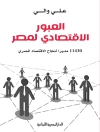Have you thought about using Lean in your business or organization,
but are not really sure how to implement it? Or perhaps
you’re already using Lean, but you need to get up to speed.
Lean for Dummies will show you how to do more with less and
create an enterprise that embraces change.
In plain-English writing, this friendly guide explores the
general overview of Lean, how flow and the value stream works, and
the best ways to apply Lean to your enterprise. You will understand
the philosophy of Lean and adopt it not as a routine, but a way of
life. This highly informative book teaches you:
* The foundation and language of Lean
* How to map the value stream and using it to your
business’s advantage
* The philosophy of Kaizen
* Different tools to improve management, customer service, and
flow and pull
* How to ‘Go Lean’ within your business and across
the industry
* Avoid common mistakes in implementation
* Seek out resources for assistance
This simple, continuous improvement approach that minimizes
waste and adds customer value is changing organizations of all
sizes all over the world. Lean for Dummies will show you to
take charge and engage your enterprise in a Lean
transformation!
表中的内容
Introduction.
Part I: Lean Basics.
Chapter 1: Defining Lean.
Chapter 2: The Foundation and Language of Lean.
Part II: Understanding Flow and the Value Stream.
Chapter 3: Seeing Value through the Eyes of the Customer.
Chapter 4: A Resource Runs through It: Value Stream Mapping.
Chapter 5: Charting the Course: Using Value Stream Maps.
Chapter 6: Flowing in the Right Direction: Lean Projects and
Kaizen.
Part III: The Lean Toolbox.
Chapter 7: Customer and Value-Stream Tools.
Chapter 8: Flow and Pull Tools.
Chapter 9: Perfection Tools.
Chapter 10: Management Tools.
Part IV: The Lean Enterprise.
Chapter 11: Lean in the Organization: Principles, Behaviors, and
Change.
Chapter 12: Power to the People.
Chapter 13: Go Lean: Implementation Strategy, Startup, and
Evolution.
Chapter 14: Lean within the Enterprise.
Chapter 15: Lean across Industry.
Part V: The Part of Tens.
Chapter 16: Ten Best Practices of Lean.
Chapter 17: Ten Pitfalls to Avoid.
Chapter 18: Ten Places to Go for Help.
Glossary.
Index.
关于作者
Natalie J. Sayer began studying and applying Lean before it
was formally known as Lean. Over her 20-year career in the
automotive industry in the United States and Mexico, Natalie honed
her skills applying Lean and Organizational Development methods
across functional areas of Fortune 130 companies. In 1996, Natalie
was an instrumental team member in the Lean transformation of a GM
facility in Matamoros, Mexico. The team was awarded the 1996 GM
President’s Council Honors for the project. While working
with General Motors, she had multiple opportunities to visit and
learn from New United Motor Manufacturing, Inc. (NUMMI). Natalie
has trained, coached, mentored, and rolled up her sleeves to
implement Lean practices, whether working in a company or
volunteering at a food bank.
She received a Bachelor of Mechanical Engineering from the
University of Dayton in 1988 and a Master of Manufacturing Systems
Engineering from the University of Michigan in 1992. She is a
graduate of Coach University and Corporate Coach University.
Natalie is also a Six Sigma Black Belt and a Global Leadership
Executive Coach.
In 2003, Natalie founded I-Emerge, an Arizona-based global
consultancy dedicated to the facilitation of people and processes
experiencing significant change. The I-Emerge toolbox includes
executive and personal coaching, group facilitation, Lean methods,
public speaking, and Organizational Development tools and
assessments. She is a passionate people person, who lives her life
with the convictions that ‘there is always a better
way’ and ‘change won’t happen without the
people.’
Bruce Williams strives for perfection and added value as
a scientist, educator, consultant, and entrepreneur. Leveraging the
Lean principle of standardized work, this is his third For
Dummies book in three years, having previously coauthored the
best-selling Six Sigma For Dummies in 2005 and the Six
Sigma Workbook For Dummies in 2006.
Undergraduate degrees in physics and astrophysics from the
University of Colorado testify to his early pursuit of
understanding the ultimate nature of root cause.












